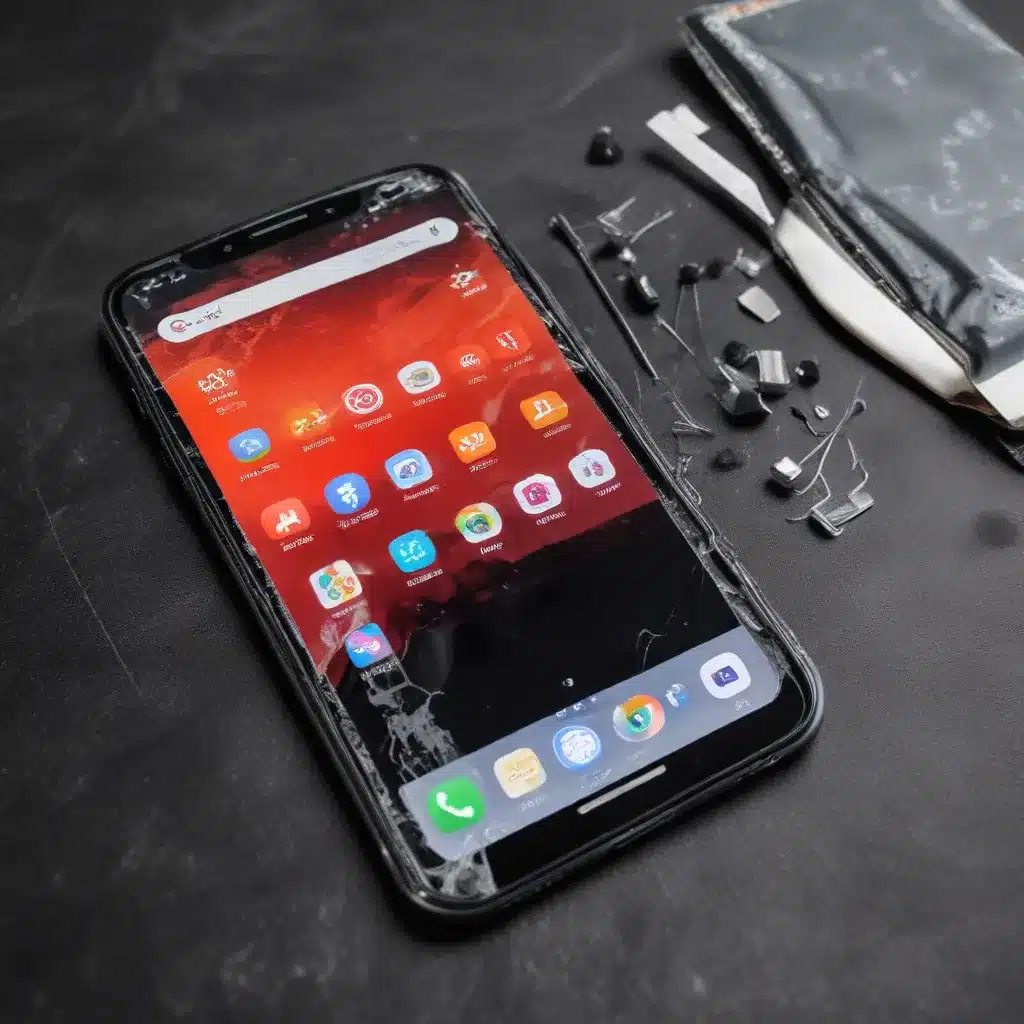
The Allure of DIY Smartphone Repair
As a seasoned IT professional, I’ve seen firsthand the temptation to take smartphone repairs into one’s own hands. The prospect of saving money and feeling empowered by a successful DIY fix can be quite compelling. However, when it comes to sensitive electronic devices like smartphones, the decision to repair or replace is rarely a straightforward one.
In this article, we’ll delve into the pros and cons of DIY smartphone screen repair, equipping you with the insights needed to make an informed decision that aligns with your needs, skills, and budget.
Understanding the Risks of DIY Repair
Smartphones are intricate devices, packed with delicate components that require a deft touch during repair. Attempting a DIY screen replacement without the proper tools and expertise can lead to disastrous consequences, such as:
- Irreparable Damage: Improper disassembly techniques can result in irreversible harm to the device’s internal circuits, sensors, and connectors, rendering the smartphone unusable.
- Data Loss: Careless handling during the repair process may cause data corruption or even complete data loss, leaving you without access to vital information, contacts, and memories.
- Safety Hazards: Mishandling the battery or other components can pose serious safety risks, including the potential for fire or explosion.
- Voided Warranty: DIY repairs often void the manufacturer’s warranty, leaving you responsible for any further issues or needed replacements.
These risks are not to be taken lightly, as a failed DIY repair can ultimately cost you more in the long run, both in terms of money and time.
Evaluating the Costs of Professional Repair
While the initial cost of a professional smartphone screen repair may seem high, it’s crucial to consider the long-term benefits and potential savings.
Professional repair services often use genuine parts and adhere to strict safety protocols, ensuring the longevity and optimal performance of your device. Additionally, many reputable repair shops offer warranties on their work, providing a safety net in case of any unexpected issues.
To illustrate the potential cost savings, let’s consider a hypothetical example:
Imagine you have a Google Pixel 6 Pro with a cracked screen. The cost of a professional screen replacement from an authorized Google service center is $279. However, if you attempt a DIY repair and accidentally damage other components, you may end up needing to replace the entire device, which could cost you upwards of $899 (the current retail price of a new Pixel 6 Pro).
In this scenario, the professional repair option not only protects your investment but also saves you hundreds of dollars compared to the cost of a full device replacement.
Considerations for DIY Smartphone Repair
While the risks of DIY smartphone repair are significant, there may be instances where the potential benefits outweigh the drawbacks. Here are some factors to consider:
- Device Age and Value: Older smartphones with lower market values may be better candidates for DIY repair, as the cost of professional services could exceed the device’s worth.
- Technical Expertise: If you have a solid understanding of smartphone internals and experience with delicate electronics repair, you may be able to successfully undertake a DIY screen replacement.
- Availability of Replacement Parts: Ensure that high-quality, compatible replacement parts are readily available and that you can source them from a reputable supplier.
- Time and Patience: Smartphone screen repair can be a time-consuming and meticulous process. If you have the patience and commitment to follow detailed repair guides, you may be able to successfully complete the task.
Remember, even if you possess the necessary technical skills, the risk of data loss or irreparable damage should not be taken lightly. Weigh the potential benefits against the risks carefully before proceeding with a DIY smartphone repair.
Alternatives to DIY Repair
If you’re hesitant about attempting a DIY smartphone screen repair, there are alternative options worth considering:
- Authorized Repair Services: Seek out authorized service centers or retailers that specialize in smartphone repairs. These professionals have the expertise and the right tools to ensure a successful and safe repair.
- Warranty and Insurance Coverage: Check if your smartphone is still under warranty or if you have purchased mobile device insurance. These options may provide coverage for screen replacements at little to no cost.
- Smartphone Upgrade: If your device is several years old and the repair cost approaches the value of a new smartphone, it may be more prudent to consider upgrading to a newer model that better suits your needs.
By exploring these alternatives, you can find the most suitable solution for your situation, balancing cost, convenience, and the long-term well-being of your smartphone.
Conclusion: Weigh the Pros and Cons Carefully
Deciding whether to pursue a DIY smartphone screen repair or opt for professional services requires a careful evaluation of the pros and cons. While the allure of saving money through a DIY fix can be tempting, the risks of irreparable damage, data loss, and voided warranties often outweigh the potential benefits.
As an experienced IT professional, I recommend exploring professional repair services, authorized warranty coverage, or smartphone upgrades as the safest and most cost-effective options in most cases. However, if you have the technical expertise, patience, and access to high-quality replacement parts, a DIY repair may be a viable choice for older, lower-value devices.
Ultimately, the decision comes down to your specific needs, skill level, and risk tolerance. By weighing all the factors and considering the potential consequences, you can make an informed choice that protects your investment and ensures the long-term functionality of your smartphone.
For more IT tips, troubleshooting insights, and technology advice, be sure to visit IT Fix. Our team of experts is dedicated to providing practical solutions and valuable insights to keep your devices and systems running at their best.












